Note: This website was automatically translated, so some terms or nuances may not be completely accurate.
A 67-year-old tea merchant is shaking up the Japanese tea industry.
This series follows Dentsu Inc. 'Company Design' team as they uncover the secrets behind vibrant companies with 'originality.' In the 37th installment, we introduce Kanes Seicha, which continues its cross-generational, cross-border challenges with its 'bottled tea.'
Kanes Seicha is based in Shimada City, Shizuoka Prefecture—a renowned tea-producing region. "Bottled tea," as the name suggests, is Japanese tea packed into wine-like bottles, with some products costing around ¥23,000 per bottle. Many might wonder, "Such expensive Japanese tea?" But after learning about the next president, Genki Komatsu's, deep passion for tea, and above all, tasting the real thing, that perception is sure to be completely transformed.
Written by: Nobu Miyazaki (Dentsu Inc. BXCC)
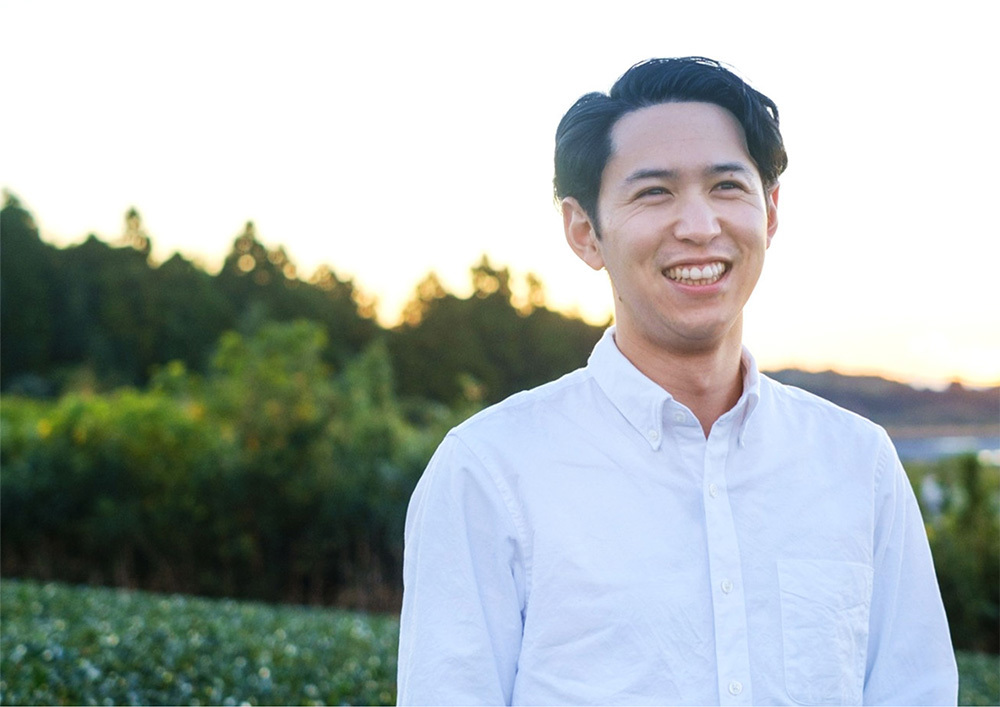
Are we only experiencing 30% of tea leaves' potential?
Founded in 1957. What kind of company is Kanes Seicha? When asked by Genki, who succeeded current president Koya Komatsu (third generation) and is slated to become the fourth-generation president, he explained it's a company that purchases tea leaves as raw materials from producers, performs secondary processing, wholesales the finished tea products domestically and internationally, and also handles direct retail sales. While wholesale tea leaves form the core of sales, the company launched its retail brand "IBUKI Bottled Tea" in 2022.
What exactly is "bottled tea"? "While there's no universal definition yet, we define bottled tea as bottled Japanese tea in liquid form that maximizes the potential inherent in the tea leaves." What exactly is the potential of tea leaves? "Tea is an extremely delicate beverage where five elements interact: water quality, temperature, steeping time, teaware, and the raw tea leaves themselves. In other words, you can't maximize its deliciousness unless you set all five of these elements, tailored specifically to the characteristics of the tea leaves."
When asked how much of the tea leaves' potential can be experienced through the everyday method of simply putting leaves and hot water in a teapot without consciously considering each element, he replied, "Well, intuitively, I'd say you're only experiencing about 30 to 40 percent of it." Having worked as a tea merchant with discerning taste in tea-producing regions for so long, he understands each tea's potential. Conversely, many people drinking tea casually every day likely remain unaware of that potential.
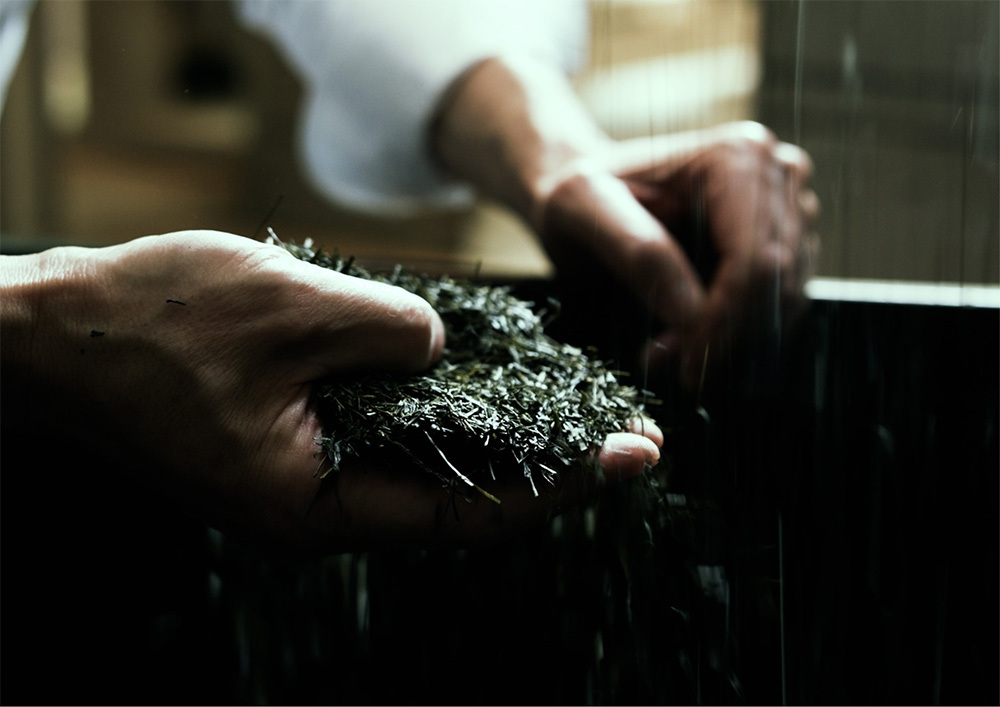
"IBUKI" is an antithesis to the current state of Japanese tea
I asked him to tell me about the bottled tea brand "IBUKI." "Originally, it was the name of our flagship tea, 'Ibuki' (Breath). It also comes from 'the breath of life.' It refers to the state where life is brimming with vitality—that is, the newly sprouted leaves, the new tea. This is an antithesis."
What exactly does "new tea" being an antithesis mean? "The first leaves are where the tea plant releases all the nutrients it stored over winter in a burst of growth come spring. New tea embodies the breath of life." In tea terms, first flush, second flush... refer to the timing of harvest, generally being spring for first flush, before summer for second flush, and autumn for third flush. "Simultaneously, the quality often follows this sequence. Most bottled teas you think of use second or third flush leaves. This doesn't mean later flushes are inferior—they're perfectly fine for refreshingly quenching your thirst. But since bottled tea aims to maximize tea's potential, we insist on using first flush leaves."
As readily available bottled tea became widespread, second and third flushes became the mainstream in trade, leading to a decline in the trade of first flush tea, which should be the most nutritious and highest quality. Furthermore, the varieties of Japanese tea, which originally numbered over 100, became skewed towards specific, high-volume varieties. This is an antithesis to the current state of Japan's tea industry.
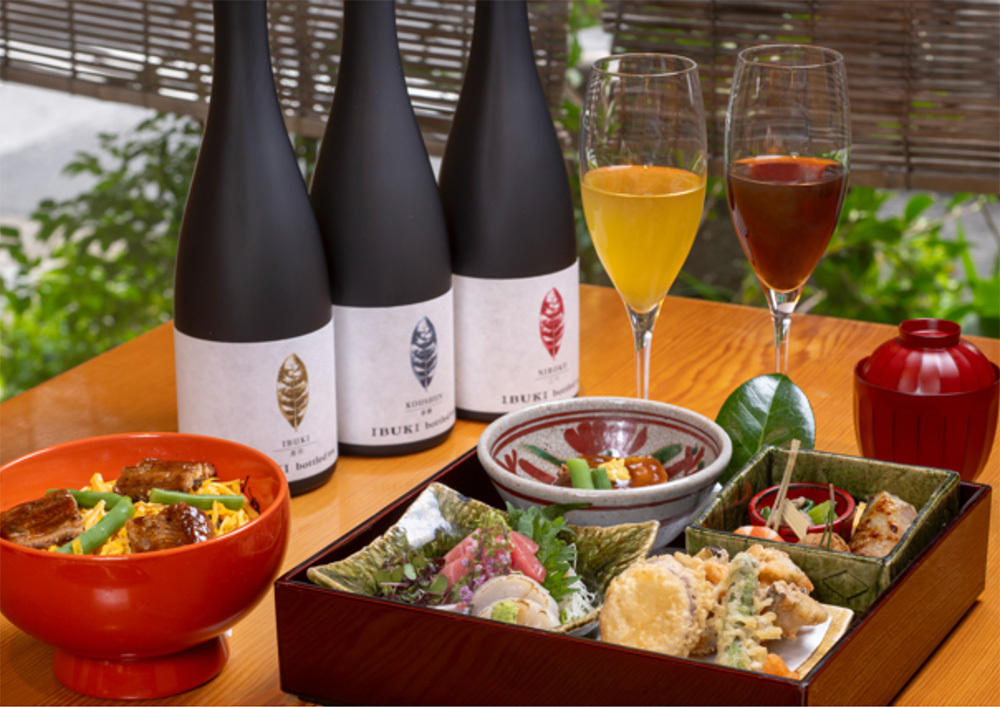
"Every day, I witness tea producers around me going out of business and tea fields falling into disrepair. We feel the decline of Japanese tea firsthand. For us, the 'game changer' that will transform the current norms of tea in Japan is bottled tea made from first flush tea."
Branding bottled tea
In 2020, Kanes Seicha made a corporate decision to pivot toward branding bottled tea. Their goal: to spread the value of tea from Shizuoka, spark a game-changing shift, and give back to producers and local communities. The following year, 2021, they established their own bottled tea factory in Shimada City. They researched and developed their own extraction methods from scratch, creating a unique process that unlocks tea's full potential.
Alongside product development, Genki-san focused on transforming the experience of drinking Japanese tea. "Since the Kamakura period, tea has been consumed as a luxury item or medicine. It spread to the masses during the Edo period, but its widespread popularity is actually quite recent. However, now that it's become so easily accessible, some people almost think of it as free. That made me realize: to change drinkers' perceptions, we had to redesign the drinking experience itself." He wanted to deliver Japanese tea to drinkers as a valuable beverage, a true luxury item. By doing so, he aimed to transform the local landscape and the situation Japanese tea finds itself in. This vision gave birth to the "IBUKI bottled tea" brand.
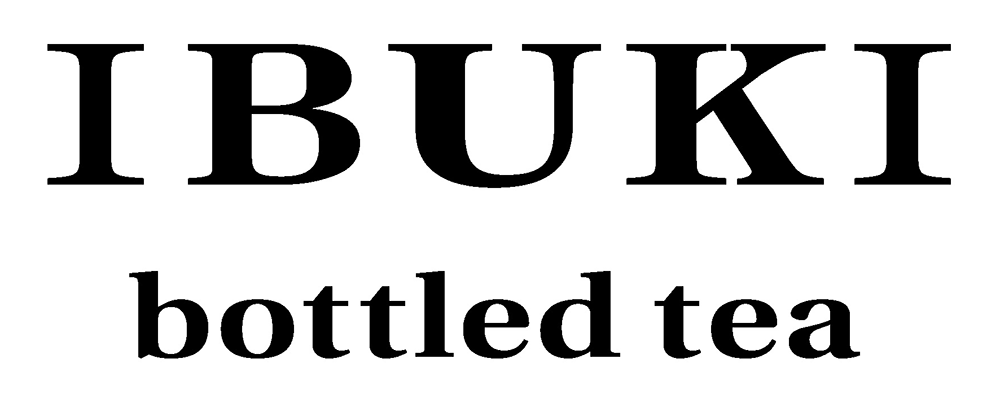
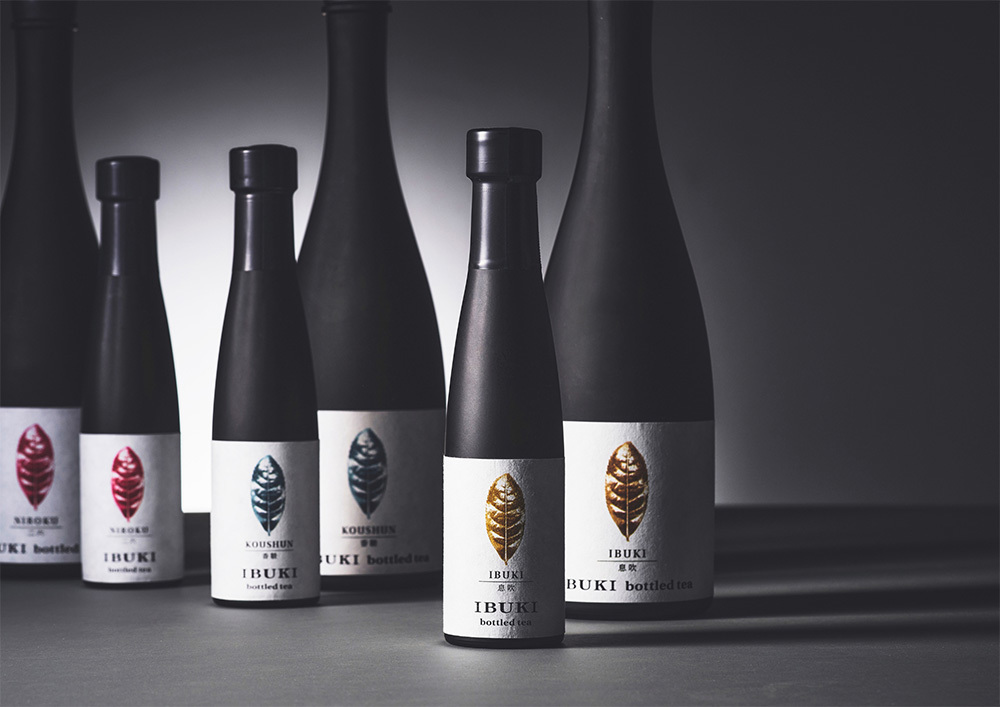
While Kanes Seicha's bottled tea has recently gained popularity overseas, Genki notes a significant gap between international and domestic perceptions. "Even as it gains attention abroad, it's still often undervalued domestically. That's what's really frustrating." While the number of players introducing new ways to enjoy Japanese tea is gradually increasing domestically, leading some to call it a Japanese tea boom, a gap remains when looking at the producers' situation. Communicating consumer reactions and feedback back to the producers is also an important task.
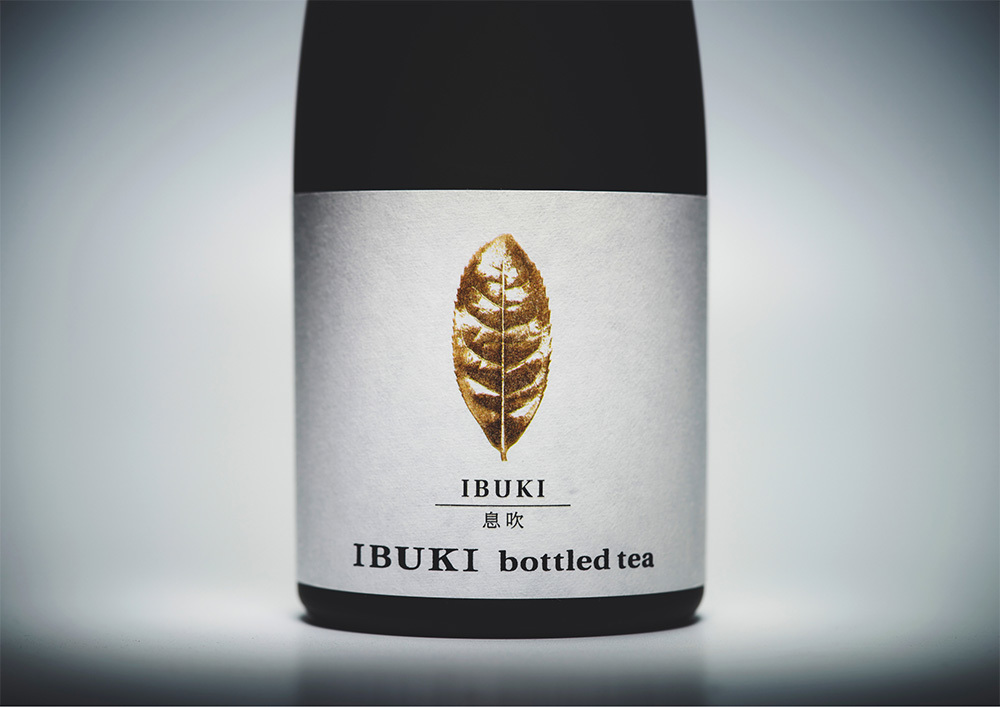
Design as a luxury and premium product
Genki-san continues on branding. "Look at the IBUKI bottle photo. My key points for product design are: ① Impactful, ② Premium feel, ③ Simplicity. During development, IBUKI's target was set as business leaders in their late 30s to late 40s – people who frequently give gifts for work or personal occasions, or share meals and drinks with others. We designed while envisioning these drinking moments."
Genki-san finds simplicity and luxury in the "black color" of virtually any product, not just beverages or food. He designed a single tea leaf on a black bottle. Indeed, among rows of premium wine or sake bottles, a label featuring "a single tea leaf" would make an impact. "That's where I focused. I wanted to create an unprecedented encounter with Japanese tea, starting from the moment someone picks it up." From clearly defining the target audience to designing the purchasing experience, the effort goes beyond mere product development. That's precisely why the pricing mentioned at the beginning was chosen.

Revitalizing the tea industry and the region is our mission
"Before joining the family business, I gained experience in various fields—not just products, but also new ventures like restaurants, and collaborations with Zen and other genres. I believe that experience is now coming to life." IBUKI bottled tea is the project to redesign the family business and local industry, leveraging the branding and marketing expertise he has cultivated.
Currently, the market is steadily expanding both domestically and internationally. When asked about future developments, he shared, "We're also exploring tourism initiatives that bring customers who purchase overseas back to the production sites. The diversity of tea-producing regions and varieties resembles the regional character found in wine or sake. We want to create opportunities for people to visit where IBUKI was born and experience the local food and terroir together. We're starting to implement this with other regional players, particularly aiming to offer it to Southeast Asians, who have a high sensitivity to the 'umami components' found in tea."
Even considering these activities alone, Genki-san seems like a reliable presence in the struggling local tea industry. Finally, I asked how one might develop ideas and actions like Genki-san's. "Speaking purely for myself, it's talking with people from outside. I think it's about having close conversations with people outside the region, outside the industry, and from overseas. You realize things that seem ordinary to us might not be ordinary to outsiders. For people in Shizuoka, drinking tea in a delicious state is normal, but outsiders are amazed by that deliciousness. Realizing the vast potential of Japanese tea was incredibly valuable for me."
It seems that by gaining an objective perspective through the eyes of outsiders, we can recognize our strengths and create new meanings. Amidst increasing regional industries nationwide facing uncertain futures due to issues like succession problems, I sensed a future where industries and regions could be revitalized based on this new meaning.

Kanes Seicha's website is here.
For the bottled tea brand "IBUKI bottled tea," click here.
For SNS posts sharing knowledge and business insights about Japanese tea, click here.
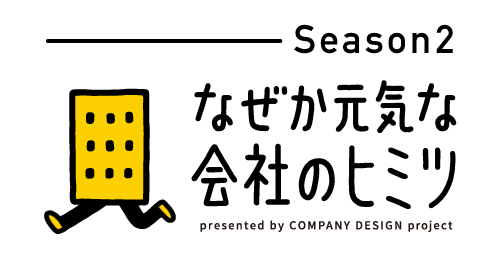
This series explores the secrets of "vibrant companies" possessing "originality," investigated by Dentsu Inc.'s "Company Design" team. Episode 37 introduced Kanes Seicha, a company continuing its challenge across generations and borders with its "bottled tea."
Find Season 1 of the series here.
The "Company Design" project site is here.
[Editor's Note]
Mr. Komatsu answered our prepared questions from every perspective: that of a farmer, a business owner, an economist... When I asked, "At the very end, as your editor, there's just one thing I absolutely must ask. Is that okay?" he replied, "Of course, go ahead. What could it possibly be?"
So, after clearing my throat, I asked him something that had puzzled me since kindergarten. "Orange, lemon, indigo, wisteria, gray, aqua, sky blue... every color has its origin in its name, right? But brown is the only one that doesn't match its image. Why is that?" Some readers might be fuming: "Don't ask such trivial questions! I wanted to end on one more wonderful discovery!" But this was something I'd always wanted to ask a tea professional someday.
Here's Mr. Genki's answer: "There are several theories. One suggests that the liquid color of tea wasn't originally green but rather a murky hue. Another theory posits that in ancient times, tea leaves were boiled vigorously, bubbling and churning in a rough manner. As I mentioned at the beginning, it's only through a delicate process that tea becomes a liquid with an emerald-like brilliance. This is purely my speculation, but perhaps the name 'brown' originated as a reference to the color produced by a process far from delicate?"
A long-held question was finally answered. Color, taste, aroma... nothing is compromised in the slightest. To have been unaware of the existence of tea cultivated, crafted, and delivered by someone like Mr. Komatsu... I truly felt I had been missing out.
Was this article helpful?
Newsletter registration is here
We select and publish important news every day
For inquiries about this article
Back Numbers
Author

Miyazaki Nobu
Dentsu Inc.
Business Transformation Creative Center
Creative Planner
After joining Dentsu Inc., I leveraged my experience in magazine publishing to collaborate with editors on content development and campaign planning for clients across diverse industries. Since 2018, I have participated in the "Dentsu abic project," an industry-academia collaboration supporting regional branding, serving as its representative since 2022. I plan and drive projects that re-edit regional assets from Hokkaido to Kyushu, branding them through collaboration and co-creation with local players.




